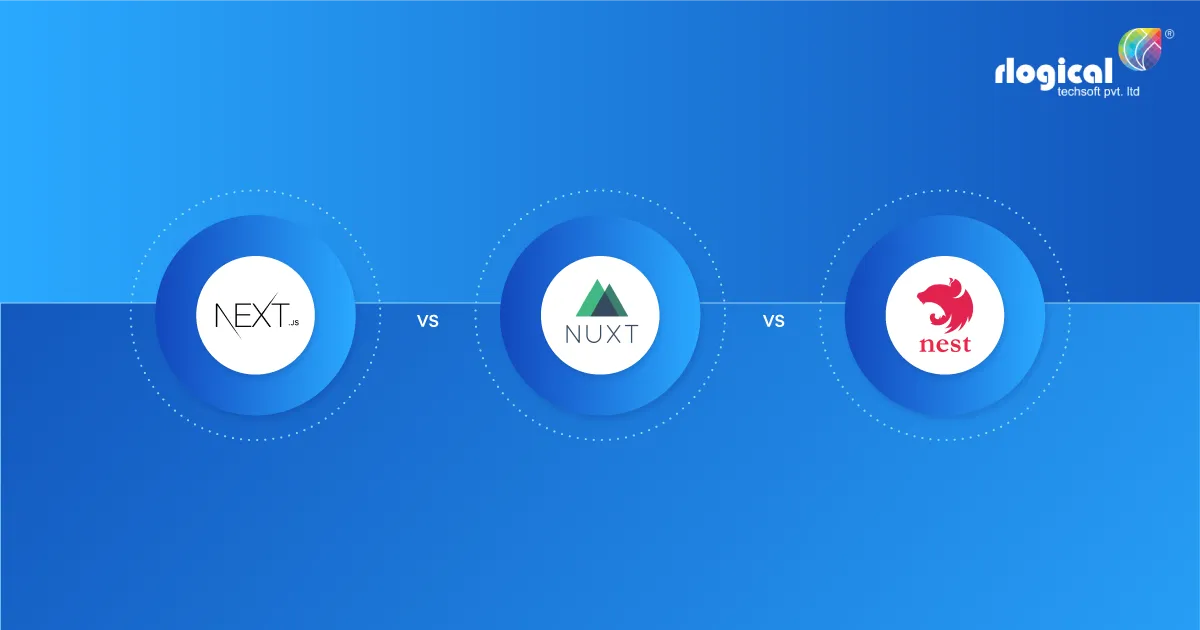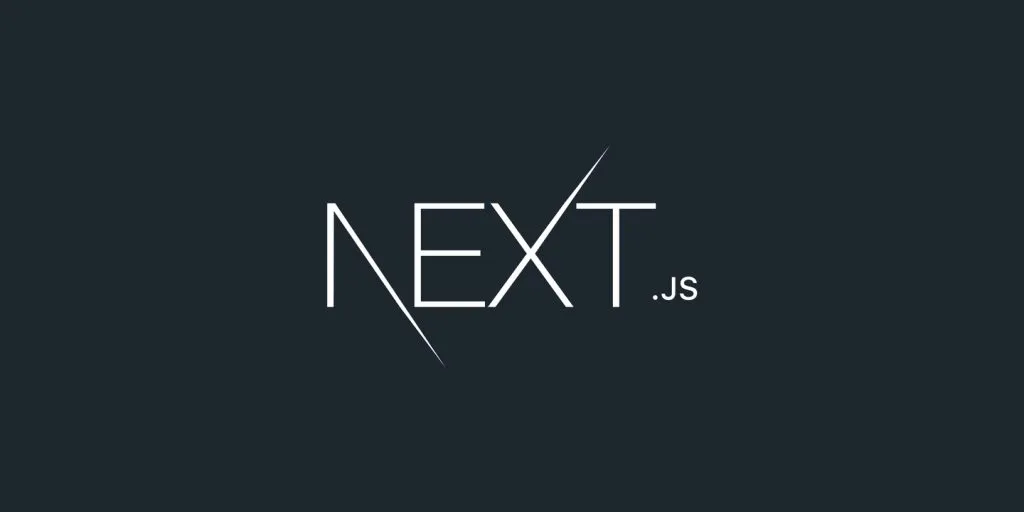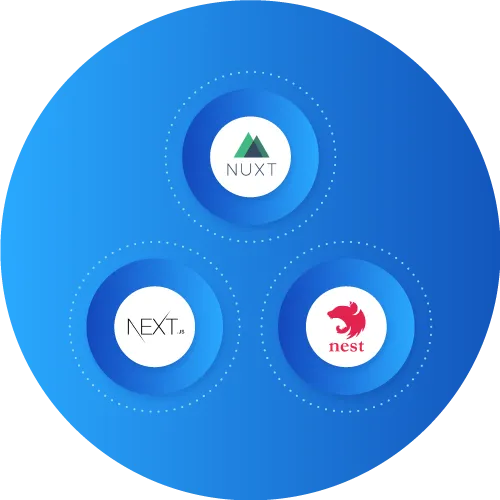
Programming can be considered to be the process of innovating something amazing and new. In case you are a coder, you must remain updated with every new forthcoming technology. There is no doubt about the fact that “Nuxt,” “Next,” and “Nest” are somewhat confusing. Although they might sound almost similar, their practical application is not the same.
It is natural for developers who are not acquainted with these frameworks to become confused initially.
This article will mention the differences between Next.js vs. Nuxt.js vs. Nest.js these three frameworks that will come up use to you.
A question that might arise here is Why We Require a Framework.
- A framework can be considered a platform providing a foundation upon which it will be possible for software developers to create programs. It enables the coder to create powerful applications.
- Moreover, a framework is responsible for providing support for creating robust applications easily and quickly, given that it offers a standard way for building and deploying applications.
Before starting with all these frameworks, we will have a briefing on client-side rendering and server-side rendering.
- It is essential to comprehend that React and Vue are the client-side rendered framework that helps to make the page viewable and interactable.
- Server-side rendering uses these platforms to make the page intractable.
We should be clear regarding these three frameworks because they are completely different from one another, although they come in the JavaScript development ecosystem.
Must Read: Front-end vs. Back-end vs. Full-stack
If you happen to be a Vue JS programmer, you can be familiar with Nuxt JS.
What Exactly is Nuxt JS?

Nuxt JS is a high-level and open-source framework that is free and based on Vue JS, Node JS, Babel JS, and Webpack. This framework comes under universal application that makes use of meta-framework and also creates single page Vue applications.
The primary objective for creating applications with Nuxt JS is to be more flexible while developing any project. It helps the programmers create fast, complicated, and universal web apps easily and quickly.
What Exactly is Vue JS?
Being an open-source JavaScript framework, Vue JS is smoother and faster when it comes to creating single-page applications and user interfaces. This is because Vue uses components, migrating or integrating the project, making it more understandable for beginners. Therefore, Vue happens to be the most effective framework for novices in learning and creating applications. If you hire Nuxt JS developer, he will not find it difficult to use this framework whatsoever. It is also useful for applications that are of a larger scale.
Must Read: Java or Dot Net: Which is Better for Web App Development?
Reasons to Consider Nuxt For Your Project
1. Create universal applications quite easily
The positive aspect regarding Nuxt JS is the fact that developers can build universal applications quite easily. The majority of the individuals are not acquainted with universal applications, especially beginners.
So, what do you mean by a universal app?
The universal app describes the JavaScript code that will be able to execute on the server-side and the client-side. You will come across lots of contemporary JavaScript frameworks such as Vue that intend to create single-page applications and universal applications based on single-page applications.
Nuxt helps to make coding more simple.
Creating long projects can be quite monotonous for the developers since it requires more time for configuration on the client-side and server-side. The primary objective will be to make it simplified for sharing codes between the client and the server.
Nuxt likewise provides the developer with an async Data process in the components used for fetching data and rendering it on the server-side. In this way, Nuxt comes of use to the developers when it comes to creating universal applications.
2. Provide automated code-splitting
Nuxt helps to generate a static version of your site with an exclusive webpack configuration. It automatically builds the program for every page, which, in turn, creates its JavaScript file. It likewise aids in accelerating the progress and maintaining the small size of the JavaScript file as well.
Advantages
- Its primary scope happens to be UI rendering.
- Render your Vue applications statically and derive all the advantages of a universal application without any server
- Set up using the command line with the starter template.
- Receive automated code splitting.
- Receive remarkable project structure by default.
- Set up transitions easily between your routes as well as create single-file components.
- Robust routing system along with asynchronous data.
- Get set up for easy development with a server that is auto-updating.
Drawbacks
- Comes with a smaller community which implies fewer resources as well as less extensive documentation.
- The presence of high traffic might put pressure on your server.
- Absence of some solid plug-ins or components.
If you compare these three frameworks, you will find that Next JS happens to be the most popular amongst them all. In the following paragraphs, we will examine why this framework has become so popular right now.
What Exactly is Next JS?

Next JS can be considered to be a JavaScript framework that makes use of React for creating server-side rendering as well as static web apps. According to every Next.JS developer, it happens to be the most effective tool for building websites since it has got some fantastic features and benefits that help make it the best option for developing web applications.
The initial thing that helps make it different from the remaining two frameworks is that it does not require any webpack configuration. Many developers might have proper knowledge regarding React; however, we will mention a brief intro to React, particularly for beginners.
What Exactly is React?
React happens to be a JavaScript library intended for creating user interfaces, and it is likewise referred to as React JS. One can use it as a base while developing single-page or mobile apps out there. It was Facebook that was responsible for creating React.
Reasons to Use Next JS for Building Your Project
1. Simple to generate website
Next JS is intended for beginner and experienced developers to create a project easily and quickly. It makes it very simple when it comes to compiling and exporting the application in HTML.
2. Server-side rendering
Next JS performs server-side rendering by default which helps to make your app optimized for the search engines. Next JS comes with a head component allowing the developers to include or create dynamic Meta-Tags.
By making use of server-side rendering, you will get the following:
- It provides the users with an initial render of the apps while the code is loaded in the background.
- It aids in creating SEO-friendly applications.
- Helps to eliminate the requirement for the client for downloading code in HTML format.
Advantages
- Every single component happens to be server-rendered by default.
- Automated code-splitting so that pages can load faster.
- Unwanted code will not be loaded.
- Dev environment, which happens to be webpack-based and supports HMR.
- It is quite simple to fetch data.
- Easy client-side routing.
- One can implement it with Express or other Node.js HTTP servers.
- It can be customized with your personal Babel as well as Webpack configurations.
Drawbacks
- Although Next is quite powerful, it can be overkill if you are building a simple application.
- It is important for all data to be loaded from the client as well as the server.
- It is not simple to migrate a server-side application to Next, and it might be quite difficult depending on the project.
One thing that helps to make Nest JS different from other frameworks is that Angular inspires it greatly.
Read Also: How to Hire Full Stack Developers From India
What Exactly is Nest JS?

It can be considered to be a framework for creating scalable and effective server-side applications. It happens to be the contemporary JavaScript that has been built using TypeScript and makes use of Express JS. The notable thing that Nest JS provides is that it helps preserve compatibility with JavaScript and the combined elements of Functional Programming, Object-Oriented Programming, and Functional Reactive Programming.
If a NestJS developer has sufficient knowledge about JavaScript, he will be able to build the most effective application in this framework. The primary objective of Nest JS is to solve the architectural issues of Node JS by offering back-end apps a modular structure to organize code into separate modules. The notable thing to work with Nest JS is that it has been fully built with TypeScript that is quite beneficial when it comes to developing an app.
Must Read: What are the Benefits of Express.JS for Back-end Development?
Some Notable Nest JS Features
- It happens to be open-source.
- It is quite simple to use and learn as well.
- NestJS comes with a robust command-line interface tool that helps to enhance your productivity.
- It has got a properly maintained and comprehensive documentation for the convenience of the users.
Advantages
- This framework is extremely annotation-driven, and the endpoints are simple and clean as well. This helps to make the development of applications quite simple in the long run.
- The folder structure is based heavily on Angular, which enables minimum downtime while first designing a Nest project.
- Components will be receiving their folders along with an application model. In this way, it will be possible to focus on the design of the endpoints and their consumers rather than the application structure.
Drawbacks
- The lack of documentation happens to be the greatest drawback experienced by Nest developers at present.
- Nest also comes with a smaller community, unlike other frameworks.
- It holds an edge when it comes to the usage of TypeScript and Angular; however, it lacks the support of a large enterprise.
Summary
Next will be the framework to go for when you require front-end rendering in complicated pages consistently. On the other hand, Nuxt happens to be the solution for all those identical complicated servicing issues when deadlines happen to be a matter of concern. Lastly, Nest will be your back-end framework for simplifying full-stack development when your project demands a JavaScript front-end.
Jatin Panchal
Jatin Panchal is the Founder & Managing Director at Rlogical Techsoft Pvt. Ltd. For more than a decade, he has been fostering the organization's growth in the IT horizons. He has always bestowed personalized approaches on .NET, PHP, Flutter, and Full-Stack web development projects. From startups to large enterprises, he has empowered them to accomplish business goals. By delivering successful industry-driven solutions, he is encouraging the capability of AI, ML, blockchain, and IoT into custom websites and hybrid mobile applications.
Related Blog
- A Guide on Progressive Web App with React: The Long-Term Solution for Business Growth
- Top JavaScript Frameworks For Your Web Applications Project
- Why Use VueJS? Most Popular Frontend Framework for Your Web Development
- Create Appealing Real-Time Applications with NodeJS: The JavaScript Edge for Apps
- Top Apps Built With Node.js: The Success Story of NodeJS
Categories
- All
- AI Development Services
- Amazon Web Services (AWS)
- ASP.Net Development
- Azure Web App
- Big Data Analytic
- Customize
- Digital Marketing
- Drupal Development
- E-commerce web development
- Education Mobile App Development
- Enterprise Application
- Event Management App Development
- Fintech
- Fitness App Development
- Food Delievery
- Front-End Development
- Grocery App Development
- Healthcare App Development
- Hire Dedicated Developers
- Hotel Booking App
- IT Industry
- JavaScript Development
- Mobile App Development
- On Demand App Development
- On Demand Healthcare App Development
- PHP Development
- POS Software Development
- Real Estate Mobile App Development
- Retail Business App Development
- Salesforce
- Social Media Development
- Software Development
- Technology
- Transportation App Development
- UI/UX Design
- Web Design
- Web Development
- Web Services
- Web/Data Scraping Services
- WordPress




 Jatin Panchal in JavaScript Development
Jatin Panchal in JavaScript Development 





